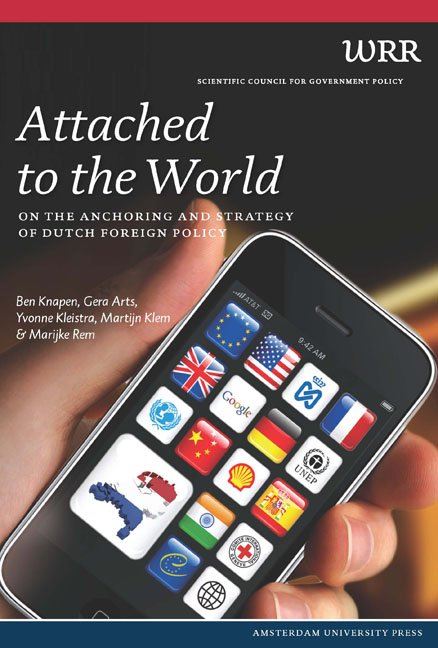Book contents
- Frontmatter
- Contents
- Summary
- Preface
- 1 Motivation and Background: An Introduction
- 2 From Fragmentation to Strategy
- 3 Europe: Arena and Link
- 4 Directing and Facilitating
- 5 Conclusions and Recommendations
- List of Abbreviations
- References
- List of Interviewees
- Appendix 1 The Interrelatedness of the Dutch EconomY
- Appendix 2 The Interrelatedness of the Netherlands With other Nations
- Appendix 3 The Dutch Network of Embassies in a Comparative Perspective
- Appendix 4 Sovereignty in Eu Member States: A Comparison
4 - Directing and Facilitating
Published online by Cambridge University Press: 19 January 2021
- Frontmatter
- Contents
- Summary
- Preface
- 1 Motivation and Background: An Introduction
- 2 From Fragmentation to Strategy
- 3 Europe: Arena and Link
- 4 Directing and Facilitating
- 5 Conclusions and Recommendations
- List of Abbreviations
- References
- List of Interviewees
- Appendix 1 The Interrelatedness of the Dutch EconomY
- Appendix 2 The Interrelatedness of the Netherlands With other Nations
- Appendix 3 The Dutch Network of Embassies in a Comparative Perspective
- Appendix 4 Sovereignty in Eu Member States: A Comparison
Summary
In the previous chapters, we have underlined the necessity of a strategic foreign policy and a dedicated concentration on Europe as the most appropriate channel for realising this policy. The EU, the wealth of important non-state players in international relations, and successful niche policy require new ways of working: they require directing and facilitating.
Re-evaluation experiences have shown that it is not easy to change course, to implement recommendations, or to change political mindsets (Van Beuningen 1997). New instruments have never been fully utilised, and the range of recommendations we have seen over the past five years, aiming to draw the consequences of changing European decision-making processes in the Netherlands, have only been followed reluctantly and hesitantly. This does not aid political resolve and it unintentionally reinforces the idea that other nations are a millstone to us more than an opportunity.
To direct and to facilitate are verbs that may be at odds. A director commonly uses others as facilitators; and those who do the facilitating are generally not in charge of directing. This tension is inevitable: it is a logical effect of our analytical starting point of the hybridity of international relations. In this domain, governments have important instruments of control and decision-making power, but international relations are shaped just as much by a web of formal and informal networks of state and non-state actors. If you wish to have an influence in the first context, you need to direct; if you wish to have an influence in the second context, you need to facilitate. If you want to make a difference in the first context, you need to invest in allies and alliances; if you want to make a difference in the second, you need to invest in a mesh of friendships so as to be able to push an auspicious development at the appropriate moment.
In order to pursue a more strategic policy, there is no choice but to gear our toolbox to both these realities of foreign policy and to exercise both directing and facilitating proficiencies. The same is true if we wish to deploy strategic foreign policy in the most appropriate foreign policy channel: Europe. In domains where governments cannot act as the highest coordinating body and where networks escape top-down control, signature strategic choices may be attractive and help to ease the directing and facilitating game.
- Type
- Chapter
- Information
- Attached to the WorldOn the Anchoring and Strategy of Dutch Foreign Policy, pp. 85 - 106Publisher: Amsterdam University PressPrint publication year: 2012



